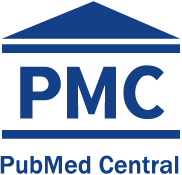Effect of Rural and Marginal Urban Health Service on the physicians’ perception of primary health care in Peru
DOI:
https://doi.org/10.17843/rpmesp.2020.374.5294Keywords:
Primary Health Care, Physicians, Primary Care, Rural Health, Rural Health Services, Rural settlements, Suburban Health Services, Health Personnel, PeruAbstract
Objective: To determine the effect of the Rural and Marginal Urban Health Service (SERUMS) on the physicians’ perception of work in the primary health care (PHC) setting and its associated factors. Materials and methods: A secondary data analysis of a sample of physicians who performed the SERUMS in 2016 was carried out. To evaluate the variable of interest, the scale “Perception of work in the PHC setting” was used, higher scores indicated a negative perception of work in the PHC setting. A baseline survey (before the SERUMS) and a follow-up survey (8-12 months after starting the SERUMS) were applied and differences in both scores were evaluated. Results: Of the 780 respondents, 215 (27.6%) completed the baseline and follow-up survey. The average score increased considerably (from 3.4 to 6.7; p < 0.001), which shows a negative perception of work in the PHC setting after participating in the SERUMS. Of the three parts of the survey, the one regarding perceptions by the physicians working in the PHC and the one about perceptions of medical work in the PHC setting increased the perception scores. No sociodemographic variables were found to be associated with the change in scores. Conclusions: Physicians’ perception about work in the PHC setting deteriorated after participating in the SERUMS. Therefore, strategies to encourage physicians’ interest in working at this level of healthcare should be promoted.Downloads
Download data is not yet available.
Downloads
Published
2020-10-12
Issue
Section
Original Article
License
Copyright (c) 2020 Revista Peruana de Medicina Experimental y Salud Pública

This work is licensed under a Creative Commons Attribution 4.0 International License.
How to Cite
1.
Bendezu-Quispe G, Mari-Huarache LF, Taype-Rondan Álvaro, Mejia CR, Inga-Berrospi F. Effect of Rural and Marginal Urban Health Service on the physicians’ perception of primary health care in Peru. Rev Peru Med Exp Salud Publica [Internet]. 2020 Oct. 12 [cited 2025 Jun. 26];37(4):636-44. Available from: https://rpmesp.ins.gob.pe/index.php/rpmesp/article/view/5294




























